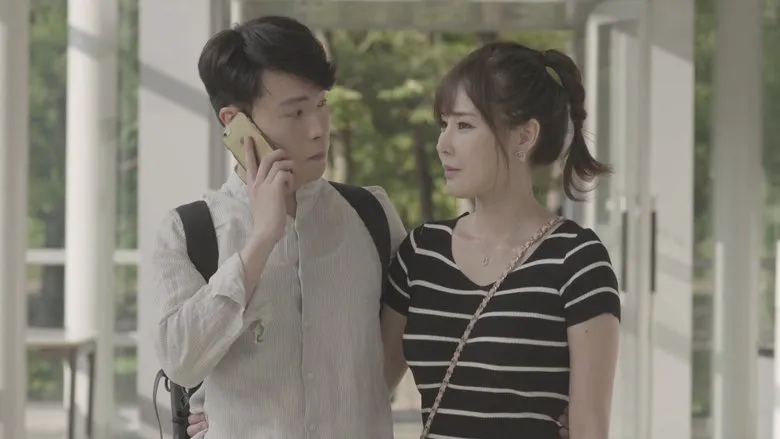The Unseen World: Unpacking the Thrilling Vision of House with a Good View
South Korean cinema has long championed stories that delve into the intricate psychology of its characters, often peeling back layers of a seemingly ordinary world to expose a darker, more tumultuous reality beneath. The film “House with a Good View” stands as a compelling testament to this tradition, presenting not just a thrilling narrative but a profound exploration of human obsession, the ethics of observation, and the courageous leap from passive spectating to active participation. While specific production anecdotes are often elusive, a look into the film’s craft reveals a masterful approach to building tension and challenging viewer perceptions.
Crafting the Gaze: Origins of an Obsession
The genesis of “House with a Good View” lies in an almost universal human curiosity: what goes on behind closed doors, or in this case, on an opposite rooftop? The film introduces Jae-min, whose initial excitement for a “good view” at his new apartment quickly sours when confronted with blocked horizons. This initial disappointment, however, is skillfully reframed by the filmmakers as a catalyst for a new, more unusual kind of vista: the lives unfolding on a neighboring rooftop.

The film’s early sequences are a deliberate slow burn, meticulously establishing Jae-min’s spiraling fascination. Director and scriptwriters make potent use of visual language: the framing of the distant rooftop through makeshift peepholes or narrow openings emphasizes Jae-min’s clandestine nature, drawing the audience into his voyeuristic world without explicit judgment at first. This subtle invitation into his perspective is crucial, as it sets the stage for the moral quandaries to come. The goal was clearly to cultivate a sense of shared intrigue and, eventually, shared discomfort, as curiosity veers into obsession.
The Shifting Canvas: From Mundane to Menace
As Jae-min’s fixation solidifies, the arrival of Yoon-ji on the neighboring rooftop fundamentally shifts the narrative’s dynamics. Her free spirit and enigmatic presence inject a heightened emotional stakes into Jae-min’s solitary existence, transforming his observations from mere routine into a landscape of burgeoning desire and unrequited fantasy. This delicate phase required careful directorial control to balance the protagonist’s internal world with the unfolding external events.

What begins as an innocent, if unsettling, character study, seamlessly transitions into a taut thriller. The filmmakers expertly introduce elements of suspense and dread through “peculiar events” and the sudden appearance of “menacing figures.” This narrative turn isn’t abrupt but a gradual escalation, mirroring the way Jae-min’s casual observation deepens into an unsettling entanglement. The creative team orchestrates this shift by strategically revealing fragments of conflict, slowly pulling back the curtain on the hidden lives across the way. This escalation is not just for shock value; it’s designed to provoke Jae-min, and by extension, the viewer, into a critical examination of observation versus intervention.
The Moral Crossroad: When Observation Demands Action
The true genius of “House with a Good View” lies in its confronting of passive spectating. As Jae-min witnesses a dramatic confrontation, the cinematic language shifts from distant observation to more immediate, visceral proximity. The film moves beyond mere voyeurism to interrogate the moral responsibilities that arise when one bears witness to suffering and crime. This is where the narrative’s strength as an intelligent thriller truly shines: it makes the audience ponder whether caring about someone from afar is enough when danger looms.
The decision-making process behind Jae-min’s eventual involvement—risking his own safety to protect Yoon-ji and the other women—is central to the film’s message. It represents a dramatic culmination of his emotional investment, transforming his obsession into a purposeful, albeit precarious, mission. This internal conflict and external action propel the film into a thrilling and intense finale, forcing its characters to confront the “forces of crime and danger.” The filmmakers effectively highlight the harsh reality of “the difference between observation and participation,” ultimately steering Jae-min (and the audience) into the uncomfortable, dangerous territory of consequence.
A Lingering Gaze: The Film’s Enduring Impact
While “House with a Good View” concludes with an ambiguous ending, it leaves an indelible mark. This deliberate narrative choice by the filmmakers ensures that the film’s questions about agency, responsibility, and the nature of connection continue to resonate long after the credits roll. Through its meticulous pacing, striking visual metaphors, and a compelling central performance, the film dissects the often-blurred lines between genuine concern and invasive obsession.
“House with a Good View” is more than just a suspenseful journey; it’s a profound psychological drama that challenges viewers to reflect on their own roles in a world where tragedy often unfolds just beyond our immediate gaze. It solidifies its place within South Korean cinema’s rich tapestry of thought-provoking thrillers, reminding us that sometimes, the most dangerous views are not those we seek out, but those that force us to confront our own humanity.